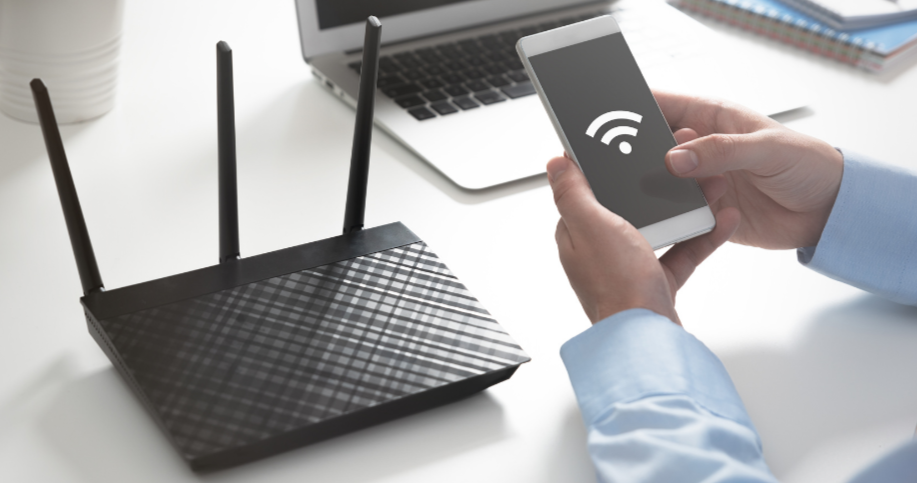How to Test Your Internet Speed, the Right Way (Step-by-Step)
Want to know whether your internet is actually delivering the speeds you pay for, and whether the problem is your Wi-Fi or your provider? Here’s a practical, step-by-step guide to testing your internet speed both over Wi-Fi and with a direct wired connection so you can diagnose problems fast.
Here’s a useful checklist for Internet Speed Testing to go along with this article. → Internet Speed Test Checklist
Quick Primer: the metrics that matter
Download (Mbps): how fast data comes to you (streaming, browsing).
Upload (Mbps): how fast data goes from you (video calls, uploads).
Ping / latency (ms): how quickly a packet gets to a server and back (critical for gaming & calls). Lower is better.
Jitter (ms): variability in latency; high jitter causes choppy calls.
Packet loss (%): lost data; any non-zero packet loss is a red flag.
Before you start: prep checklist
Test at a normal usage time (avoid testing during a heavy network event unless you want to measure peak congestion).
Update your device (OS/browser) and close unnecessary apps and background downloads.
Use a modern browser or a trusted speed-test app.
If possible, reboot your router 5–10 minutes before testing (helps clear transient issues).
Have an Ethernet cable ready for the wired test.
Part A: Test over Wi-Fi (to measure real-world experience)
Pick one device (laptop is ideal) and connect it to your Wi-Fi network.
Position yourself where you normally use the internet (e.g., living room, upstairs office). If you want to locate dead zones, test in multiple rooms.
Make sure other devices aren’t streaming, updating, or downloading. Pause backups and big downloads.
Note the band your device is using (2.4 GHz or 5 GHz). If possible, test on both bands separately.
Run the speed test using a reputable site/app (e.g. Speedtest, Fast.com, or NCWCOM’s very own speedtest: Link).
Record the results: download, upload, ping, jitter, and the test time & location in the house.
Repeat the test 2–3 times in the same spot and average the results.
Move closer to the router (e.g., same room) and repeat, if speeds jump a lot, it’s a Wi-Fi/placement/radio issue, not the ISP.
Part B: Test with a wired (Ethernet) connection, which isolates ISP/modem/router link
Connect your device directly to the router/modem using an Ethernet cable.
If you have a separate modem and router, plug into the router’s LAN ports (or ports labeled Lan 1, Lan 2, Lan 3, and etc.) unless instructed otherwise.
Disable Wi-Fi on your device so traffic routes only through Ethernet (prevents accidental Wi-Fi use).
Close background apps again to make the test clean.
Run the same speed test you used for Wi-Fi.
Record the results (download, upload, ping, jitter).
Compare Wi-Fi vs wired results:
If wired speeds match or are close to your plan but Wi-Fi is much lower → problem is Wi-Fi (placement, interference, old router, congested band).
If wired speeds are also low → likely an ISP/modem or service issue; contact NCWCOM/support with your test records.
Advanced checks and diagnostics
Test multiple devices: a problem on one device might be device-specific.
Test at different times (morning, afternoon, evening): to see if speeds drop during peak hours.
Try different speed-test servers (most speedtest tools let you pick servers): results can vary by server distance.
Check latency-sensitive apps: do a quick Zoom call or cloud file upload after testing to see real-world behavior.
Inspect router settings: Are you on legacy Wi-Fi standards (802.11n) vs. modern (ac/ax)? Is QoS enabled? Is the firmware up to date?
If you see packet loss or high jitter on wired tests: note the times and contact support, that’s often a network issue that needs provider attention.
→ See what ZDNet has to say about this subject: https://www.zdnet.com/home-and-office/networking/the-right-way-to-run-an-internet-speed-test-and-how-i-use-the-results-for-better-wi-fi/
How to interpret results vs your plan
Within ~10–20% of your plan speeds (wired) = generally acceptable.
Wired speeds far below plan = their maybe service issues, contact NCWCOM support (include timestamped test results).
Wi-Fi much lower than wired = their maybe a router issue, so optimize placement, channels, or consider an upgrade (mesh/extender/new router).
Quick troubleshooting tips if Wi-Fi is weak
Move router to a central, elevated location.
Keep router away from microwaves, cordless phones, thick walls, and large metal objects.
Use 5 GHz for near-router devices and 2.4 GHz for long-range devices.
Change Wi-Fi channel to avoid neighbor interference (auto or manual selection).
Consider mesh Wi-Fi for larger homes or extenders for isolated dead zones.
Replace routers older than ~5 years, new models support better range, security, and throughput.
What to send NCWCOM if you need help
If you contact support, include:
Date & time of tests
Device used and location in the home (e.g., kitchen, 2nd floor)
Wired test results vs Wi-Fi results (copy/paste numbers)
A brief description of the problem (e.g., Zoom calls drop every Tuesday evening)
This speeds up diagnosis and helps our team pinpoint the issue faster.
Wrap Up
Testing both over Wi-Fi and with a direct wired connection gives you the clearest picture of whether the problem is your home network or the internet service itself. Do the simple steps above, document your results, and you’ll either fix the issue quickly or have everything NCWCOM needs to help you further.
Here is that printable checklist for Internet Speed Testing again, just in case you are ready to do the test now after reading this full article. → Internet Speed Test Checklist
If you are a customer of ours, please contact NCWCOM directly for additional assistance.



